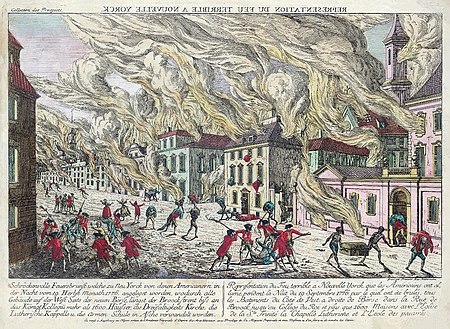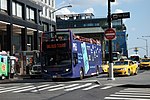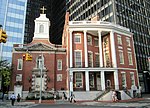Great Fire of New York (1776)

The Great Fire of New York was a devastating fire that burned through the night of September 20, 1776, and into the morning of September 21, on the West Side of what then constituted New York City at the southern end of the island of Manhattan. It broke out in the early days of the military occupation of the city by British forces during the American Revolutionary War. The fire destroyed about 10 to 25 percent of the buildings in the city, while some unaffected parts of the city were plundered. Many people believed or assumed that one or more people deliberately started the fire, for a variety of different reasons. British leaders accused revolutionaries acting within the city and state, and many residents assumed that one side or the other had started it. The fire had long-term effects on the British occupation of the city, which did not end until 1783.
Excerpt from the Wikipedia article Great Fire of New York (1776) (License: CC BY-SA 3.0, Authors, Images).Great Fire of New York (1776)
Pearl Street, New York Manhattan
Geographical coordinates (GPS) Address Nearby Places Show on map
Geographical coordinates (GPS)
| Latitude | Longitude |
|---|---|
| N 40.703055555556 ° | E -74.013055555556 ° |
Address
Whitehall Street-South Ferry
Pearl Street
10038 New York, Manhattan
New York, United States
Open on Google Maps









